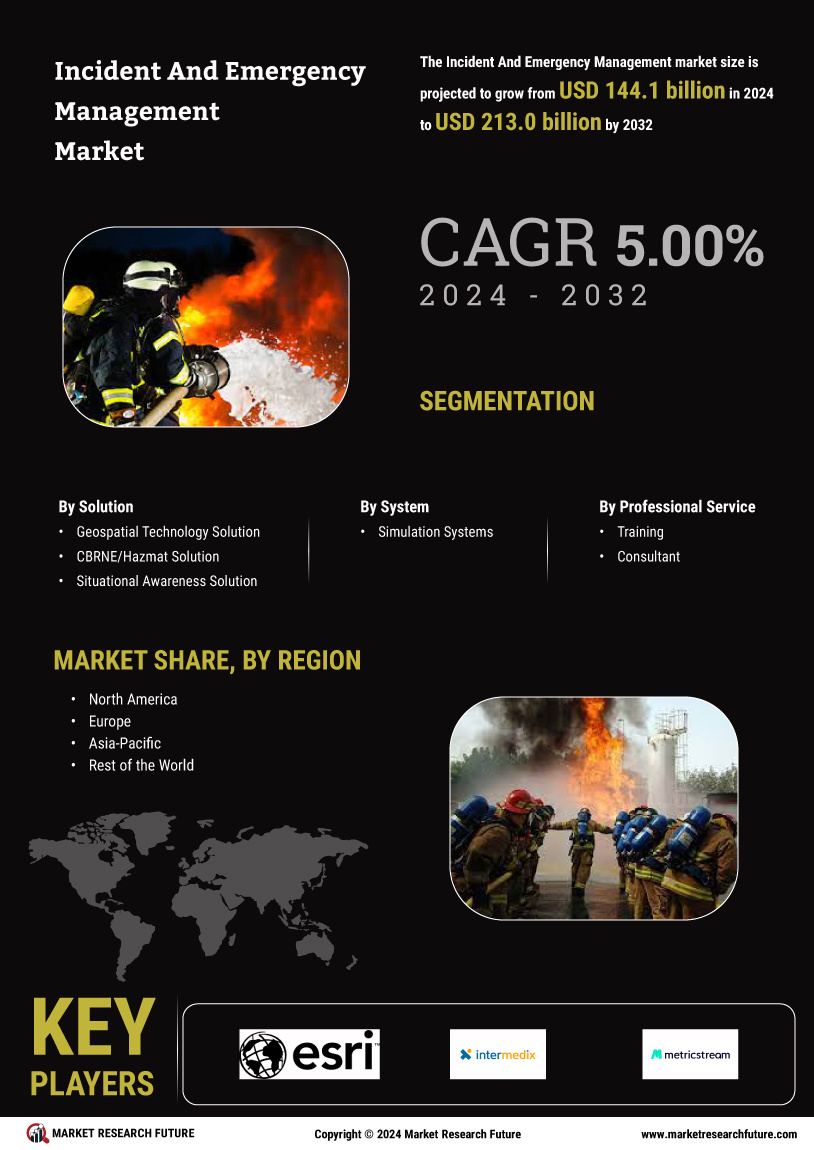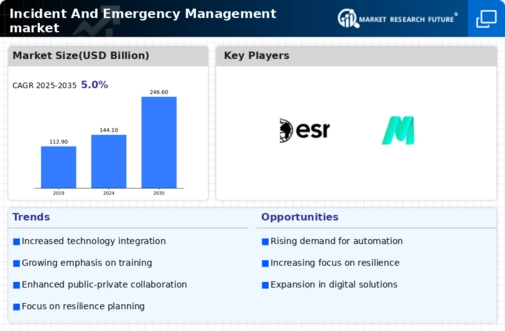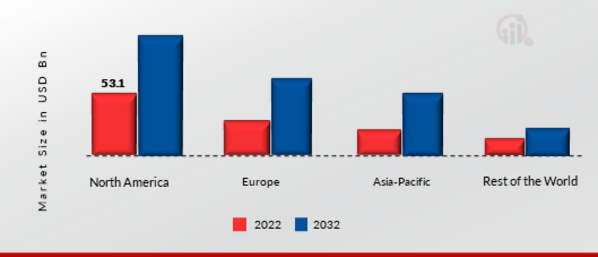Market Growth Projections
The Global Incident And Emergency Management market Industry is poised for substantial growth, with projections indicating a market size of 144.1 USD Billion in 2024 and a potential increase to 246.6 USD Billion by 2035. This growth trajectory suggests a compound annual growth rate of 5.0% from 2025 to 2035, reflecting the increasing demand for effective emergency management solutions. Factors such as rising natural disasters, technological advancements, and government initiatives are likely to contribute to this upward trend. As organizations and governments prioritize safety and preparedness, the market is expected to expand significantly, highlighting the critical importance of incident and emergency management.
Technological Advancements
Technological innovations are transforming the landscape of the Global Incident And Emergency Management market Industry. The integration of artificial intelligence, machine learning, and big data analytics is enabling organizations to improve their situational awareness and decision-making processes. For example, the use of drones for aerial surveillance during emergencies has proven effective in assessing damage and coordinating response efforts. As these technologies become more accessible, the market is expected to grow significantly, with projections indicating a rise to 246.6 USD Billion by 2035. This evolution suggests that technology will play a pivotal role in shaping future emergency management practices.
Increasing Natural Disasters
The frequency and intensity of natural disasters appear to be rising globally, necessitating robust incident and emergency management strategies. Events such as hurricanes, wildfires, and floods have prompted governments to invest heavily in preparedness and response systems. For instance, the Global Incident And Emergency Management market Industry is projected to reach 144.1 USD Billion in 2024, reflecting the urgent need for effective management solutions. Countries are increasingly adopting advanced technologies, such as predictive analytics and real-time monitoring, to enhance their response capabilities. This trend indicates a growing recognition of the importance of proactive measures in mitigating disaster impacts.
Public Awareness and Education
Raising public awareness about emergency preparedness is crucial for effective incident management. Educational campaigns aimed at informing citizens about disaster response protocols and safety measures are gaining traction globally. This focus on community engagement is reflected in the Global Incident And Emergency Management market Industry, as organizations strive to empower individuals with the knowledge and tools necessary to respond effectively during crises. Enhanced public understanding can lead to quicker response times and reduced casualties during emergencies. As a result, the market is likely to see increased investment in educational programs and resources to support this initiative.
Government Initiatives and Funding
Governments worldwide are increasingly recognizing the necessity of investing in incident and emergency management frameworks. Legislative measures and funding allocations aimed at enhancing public safety are becoming more prevalent. For instance, various national and local governments are establishing dedicated agencies and programs to address emergency preparedness. This trend is reflected in the Global Incident And Emergency Management market Industry, which is anticipated to experience a compound annual growth rate of 5.0% from 2025 to 2035. Such initiatives not only bolster community resilience but also foster collaboration among various stakeholders, including private sectors and non-governmental organizations.
Urbanization and Population Growth
Rapid urbanization and population growth are contributing to the complexities of incident and emergency management. As cities expand, the risks associated with densely populated areas increase, necessitating comprehensive management strategies. The Global Incident And Emergency Management market Industry is responding to these challenges by developing tailored solutions that address urban vulnerabilities. For instance, smart city initiatives are being implemented to enhance infrastructure resilience and improve emergency response capabilities. This trend underscores the need for innovative approaches to manage the unique risks posed by urban environments, thereby driving market growth.




